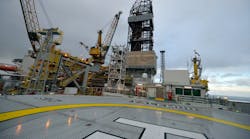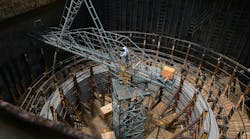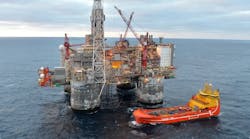Editor's note: This story first appeared in the July-August 2022 issue of Offshore magazine. Click here to view the full issue.
By David Paganie * Houston
The offshore oil and gas industry has been in perpetual transformation since the 1960s, when it progressed out into 300 ft of water (considered deepwater at the time) with the first floating drilling rigs.
Today, the industry’s search for the most lucrative barrels extends into remote and harsh environments, and in water depths that exceed 11,000 ft. Advances in seismic, drilling, production, and maintenance technologies have enabled this progression.
Meanwhile, derivatives of offshore oil and gas technology are paving the way for the development and production of offshore wind energy in deepwater. With natural synergies between oil and gas and wind power development, the conventional offshore oil and gas industry is transforming into an all-inclusive energy industry.
Technological innovation has been the core enabler of the industry’s progression and transformation. While the impetus for change has varied over the years, the appetite for innovation has been constant.
A forward-thinking approach was presented by Petronas at the recent Floating Energy Systems Asia virtual event, presented by Offshore. Petronas, like many other operators, is committed to decarbonizing its operations.
The operator is aiming to transform its conventional onboard power generation systems with energy efficient, electric, and hybrid power solutions. One of its concepts is a floating power station that could store power from renewable resources and use combined cycle gas turbine generation. It would hook-up via subsea cable to a production platform to provide power on demand, and then move to other locations as needed. It is an ambitious concept that requires more research, but it certainly illustrates the industry’s ingenuity.
Petrobras and the Brazilian government are committed to long-term offshore oil and gas production, but they also see scope for an integrated energy approach involving the expansion of Brazil’s renewable energy capabilities into offshore wind, hydrogen, and carbon capture and storage, writes Jeremy Beckman, editor-Europe. Petrobras is aiming to be a low-carbon producer and plans to get there with the deployment of decarbonization solutions that include HISEP technology for separation of CO2, a new in-house design of an all-electric FPSO, advances in methane detection, and carbon capture utilization and storage (CCUS), among others.
Jeremy’s full story on Brazil’s energy transformation begins on page 28.
Operators are also developing new methods and technologies to reduce and eliminate flaring. The practice of flaring represents about 30% of the total carbon dioxide emissions produced by the oil and gas industry, and it has come under increased scrutiny over its environmental impact in recent years, notes Bruce Beaubouef, managing editor. Practical alternatives include closed flare technology to eliminate routine flaring by capturing purge gas and recycling it back to the process. Another way to recycle excess gas is to use it for hydrocarbon gas blanketing of cargo tanks, as an alternative to inert gas blanketing, for the crude oil in storage. These methods of reducing flaring have been employed extensively offshore Norway.
Bruce’s flaring alternative technology update and market outlook begins on page 36.
Another transformative approach is the use of robotics, autonomous underwater vehicles, and unmanned aerial vehicles (or drones) for remote inspection and maintenance of offshore facilities. The benefits of drones include access to remote areas, difficult-to-reach offshore structures, and dangerous zones, without exposing personnel, writes Ariana Hurtado, editor and director of special reports. The low-emitting technology can also measure methane leaks, which is a high priority in the industry.
Ariana’s remote inspection technology review begins on page 40.
Meanwhile, and despite industry efforts to decarbonize, the business case for deepwater is still favorable. Authors from Ernst & Young make a compelling case beginning on page 24.





